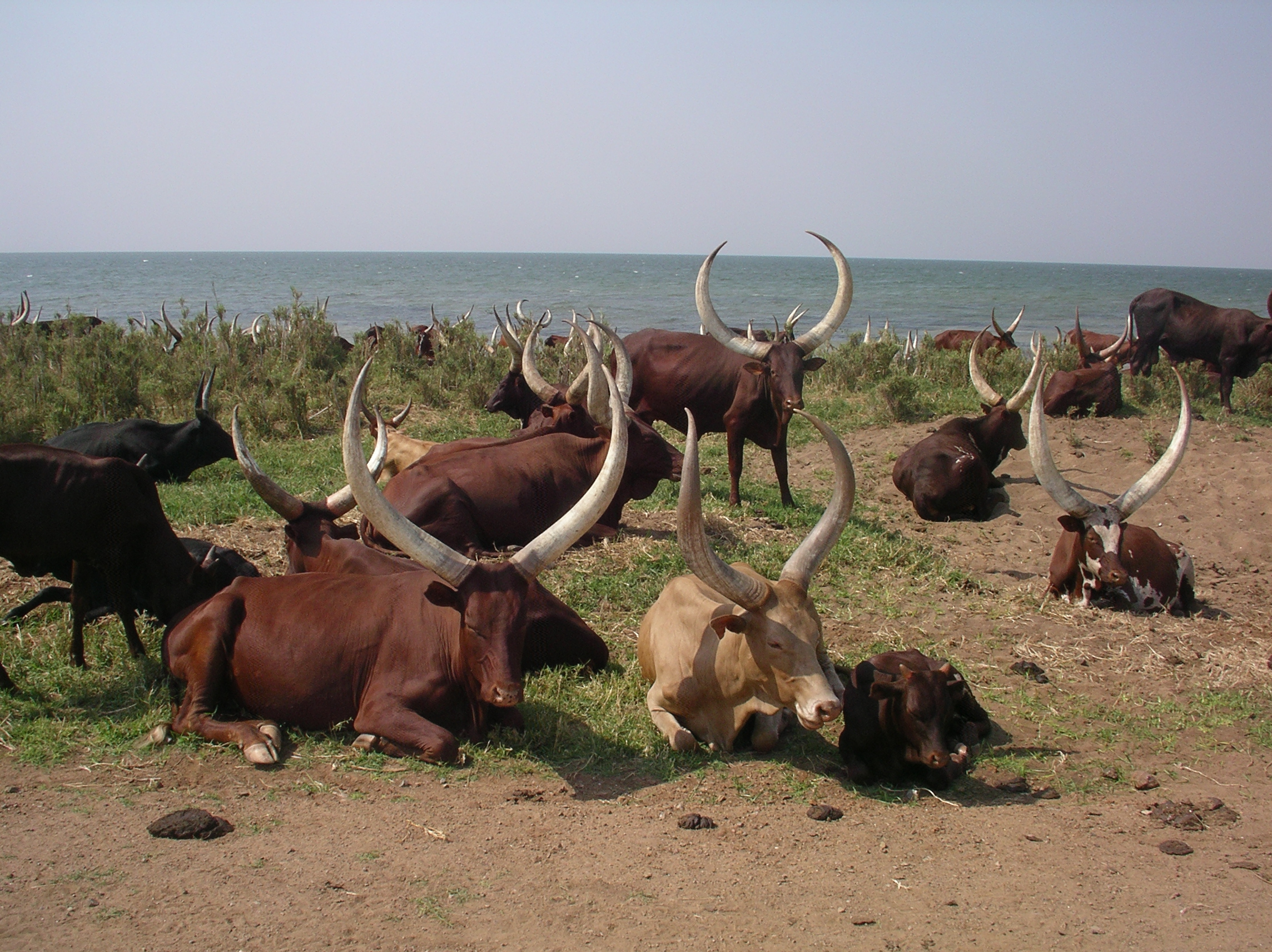Ankole (cattle) on:
[Wikipedia]
[Google]
[Amazon]

 The Ankole is a
The Ankole is a

 The Ankole is a
The Ankole is a breed
A breed is a specific group of domestic animals having homogeneous appearance (phenotype), homogeneous behavior, and/or other characteristics that distinguish it from other organisms of the same species. In literature, there exist several slig ...
or group of breeds of African cattle, belonging to the broad Sanga cattle
Sanga cattle is the collective name for indigenous cattle of sub-Saharan Africa. They are sometimes identified as a subspecies with the scientific name ''Bos taurus africanus''. Their history of domestication and their origins in relation to ta ...
grouping of African breeds. It was probably introduced to Uganda
}), is a landlocked country in East Africa
East Africa, Eastern Africa, or East of Africa, is the eastern subregion of the African continent. In the United Nations Statistics Division scheme of geographic regions, 10-11-(16*) territor ...
between five and seven hundred years ago by nomadic pastoralists
Pastoralism is a form of animal husbandry where domesticated animals (known as "livestock") are released onto large vegetated outdoor lands (pastures) for grazing, historically by nomadic people who moved around with their herds. The animal s ...
from more northerly parts of the continent. It is distributed in much of eastern and central Africa, particularly in Uganda, the Democratic Republic of the Congo
The Democratic Republic of the Congo (french: République démocratique du Congo (RDC), colloquially "La RDC" ), informally Congo-Kinshasa, DR Congo, the DRC, the DROC, or the Congo, and formerly and also colloquially Zaire, is a country in ...
, Rwanda, Burundi and parts of Tanzania. There are at least five distinct regional strains, some of which may be reported as breeds in their own right. These include:
* the Bahima, found in Uganda and the Congo, associated with the Bahima
The Hema people or Bahema (plural) are an ethnic group of Nilotic origin who are concentrated in parts of Ituri Province in the eastern Democratic Republic of the Congo.
Ethnic group
The Hema are a Nilotic ethnic group, related to the Banyo ...
and other peoples;
* the Bashi in the Congo;
* the Kigezi, kept by Bakiga
Kiga people, or ''Abakiga'' ("people of the mountains"), are a Bantu ethnic group native to south western Uganda and northern Rwanda.
History Pre-colonial period
The Kiga people are believed to have originated in Rwanda as mentioned in one of ...
people in the former Kigezi District
Kigezi District once covered what are now Kabale District, Kanungu District, Kisoro District and Rukungiri District, in southwest Uganda. Its terraced fields are what gives this part of Uganda its distinctive character. Kigezi was popularly known ...
of south-western Uganda
* the Ruzizi, from the Ruzizi Valley between Lake Kivu
Lake Kivu is one of the African Great Lakes. It lies on the border between the Democratic Republic of the Congo and Rwanda, and is in the Albertine Rift, the western branch of the East African Rift. Lake Kivu empties into the Ruzizi River, which ...
and Lake Tanganyika
Lake Tanganyika () is an African Great Lake. It is the second-oldest freshwater lake in the world, the second-largest by volume, and the second-deepest, in all cases after Lake Baikal in Siberia. It is the world's longest freshwater lake. ...
* the Watusi, found in Burundi, Congo, Rwanda, Uganda and parts of Tanzania, associated with Watusi or Tutsi
The Tutsi (), or Abatutsi (), are an ethnic group of the African Great Lakes region. They are a Bantu-speaking ethnic group and the second largest of three main ethnic groups in Rwanda and Burundi (the other two being the largest Bantu ethnic grou ...
people in those areas. Two small herds of the Inyambo strain of Watusi are kept in Rwanda; it is not clear if or how these are related to the royal herd of Inyambo cattle reportedly confiscated and auctioned off in 1964.
References
Cattle breeds {{Cattle-stub